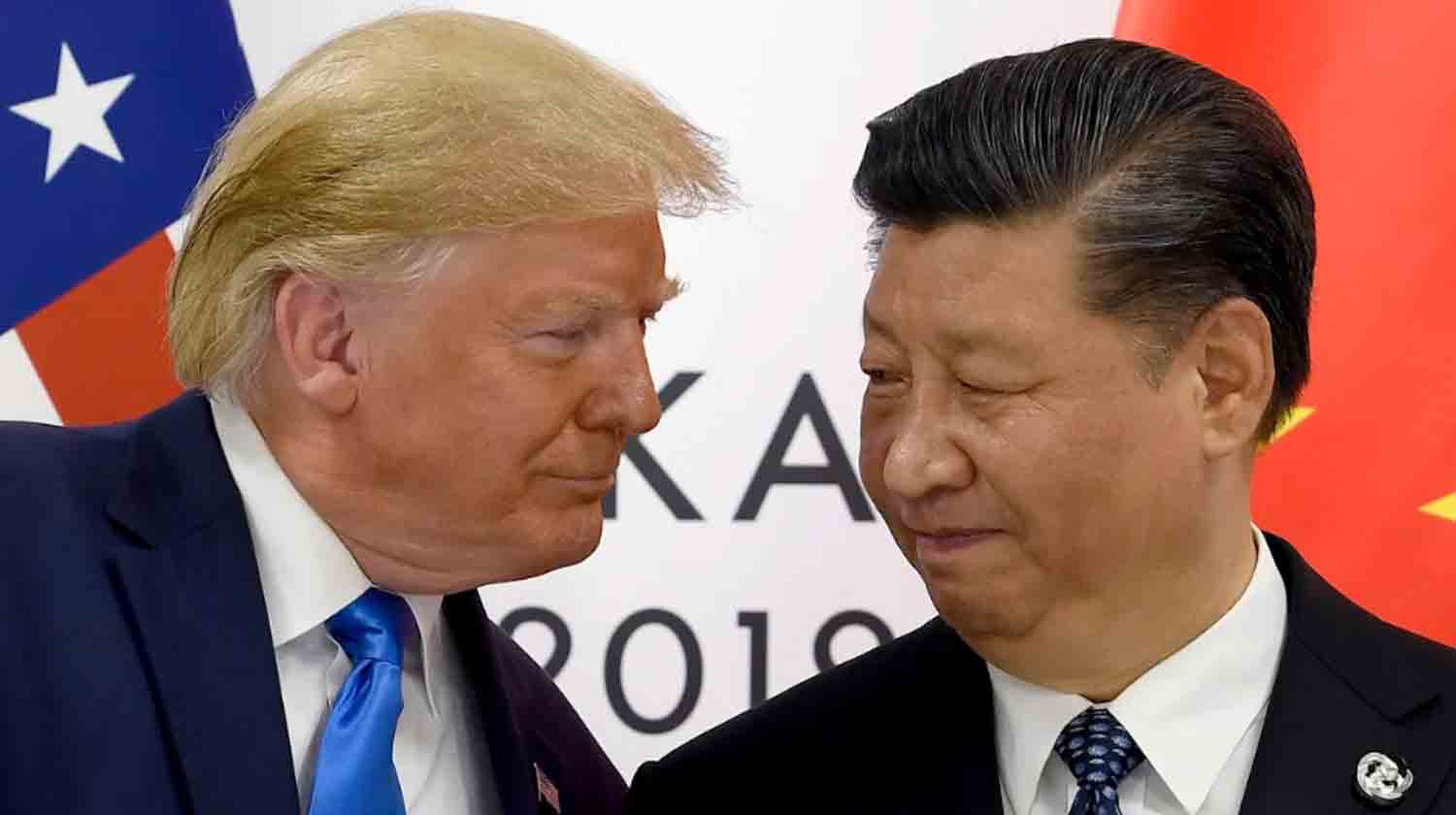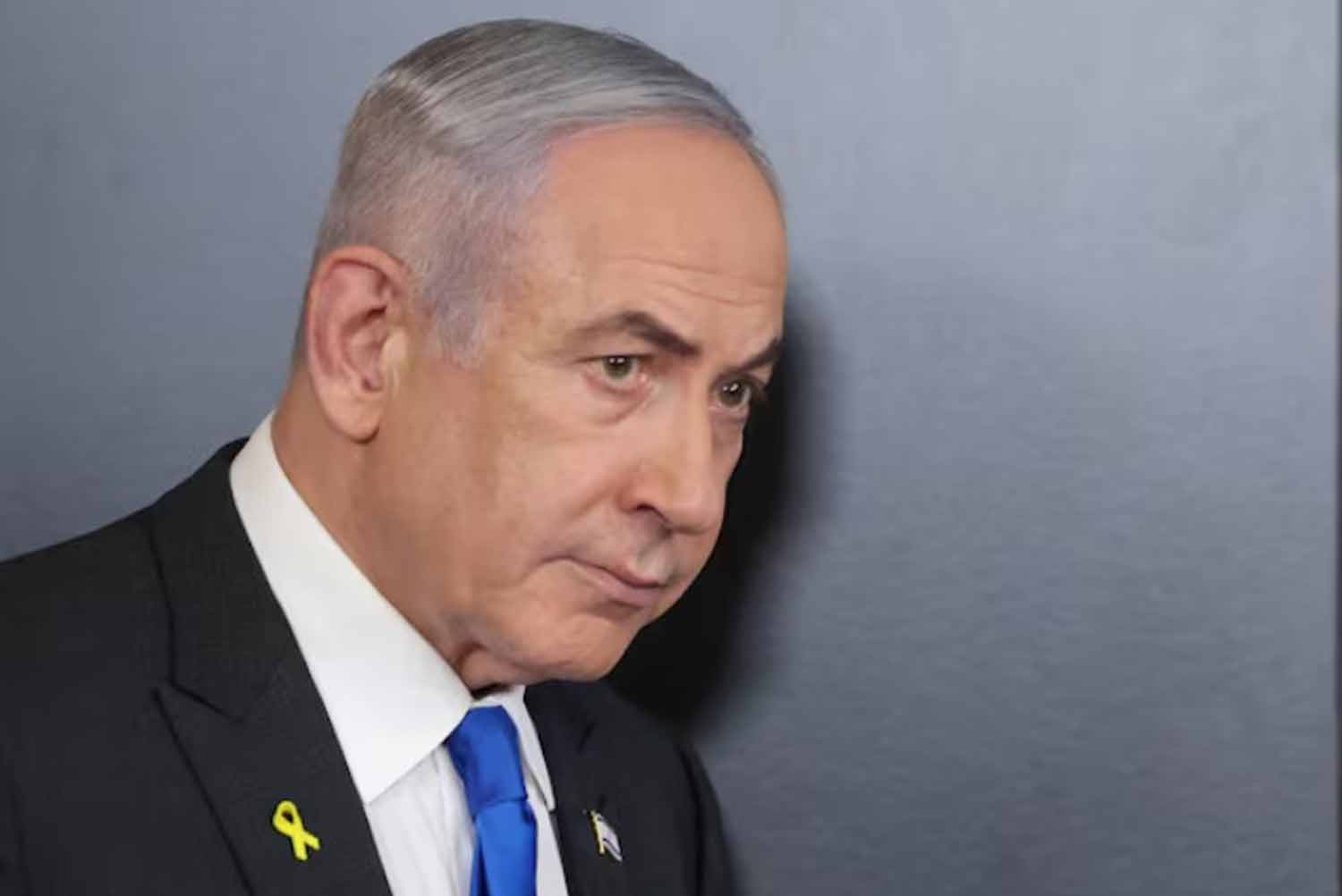In a significant shift from a widespread global tariff conflict, President Donald Trump intensified his confrontation with China, a nation that poses a formidable challenge to the United States in trade.
On Wednesday, Trump unexpectedly declared a 90-day suspension of all “reciprocal” tariffs that he had previously announced with great enthusiasm just a week earlier. However, he made an exception for China, increasing its tariff from 104% to 125% as part of an ongoing tit-for-tat battle that has led to a tense standoff between the two leading global powers.
This decision to retreat from reciprocal tariffs followed several days of declining stock market performance and growing concerns that his actions could push the U.S. economy toward a severe recession.
Trump’s focus on China may have been an effort to maintain his image while reversing his earlier stance, but it raises concerns that trade between the two largest economies could come to a standstill, causing significant harm to both nations and triggering negative effects worldwide.
The White House attempted to frame this retreat as a strategic victory, claiming that the pause in reciprocal tariffs was prompted by a surge of countries eager to negotiate with the U.S. It asserted that China faced increased tariffs due to its retaliatory measures against Trump’s trade policies.
Treasury Secretary Scott Bessent characterized the targeting of Beijing as a move to confront “bad actors,” attributing it to China’s persistent escalation in the trade conflict.
There is a broad consensus in Washington that the trade relationship with China is skewed, necessitating a strong response from the US to address what are seen as violations by Beijing. However, Trump’s erratic leadership style is unlikely to yield the intended results, as each of his challenges is met with a counter from President Xi Jinping, who has invested significant credibility in this confrontation.
This standoff is the result of years of US efforts to tackle perceived trade injustices by China and marks the peak of deteriorating relations over the past decade. This decline has been fueled by a more aggressive and nationalistic approach from a Pacific competitor that has evolved into a hostile superpower eager to contest US dominance.
This situation represents a troubling milestone in a diplomatic relationship that will significantly shape the 21st century and signals a failure of a long-standing US initiative aimed at preventing tensions from escalating into a full-blown trade war—or potentially worse—between these two global powers. On Wednesday, China retaliated by announcing tariffs of 84% on US imports. Global policymakers and investors are closely monitoring how Beijing will react to Trump’s latest challenge on Thursday morning, according to local time.
For over 50 years, the US has sought to navigate China’s rise, beginning with President Richard Nixon’s historic visit to Chairman Mao Zedong, which aimed to open up a previously isolated and impoverished nation and create a rift between its leaders and their Soviet communist allies. Nearly 25 years have passed since another significant event: the US facilitated China’s entry into the World Trade Organization, hoping to encourage democratic reforms and integrate it into a rules-based, Western-oriented economic framework.
The ultimate shortcomings of these well-meaning initiatives are becoming increasingly evident during Trump’s second term. The president ascended to power on a populist surge that was, in part, a response to globalization, which resulted in the outsourcing of American industrial jobs to China, leaving devastation in its path.
Prospects for a deal with China seem grim
The outlook for a trade agreement with China appears bleak. Trump asserts that numerous countries are keen to negotiate trade deals to alleviate the burden of US tariffs.
However, China is not among them.
Beijing dismissed Trump’s warning against retaliating to a previous 34% tariff imposed alongside an initial set of duties, stating it was prepared to fight “to the end.” As the conflict with President Xi Jinping escalated, the US president felt compelled to uphold his credibility by following through on his threat to implement a massive import tax on goods from the world’s second-largest economy.
“Countries like China that have opted to retaliate and intensify their mistreatment of American workers are making a grave error,” said White House press secretary Karoline Leavitt on Tuesday. “President Trump possesses unwavering resolve, and he will not yield, nor will America falter under his leadership.”
The significant amount of personal and political capital Trump has now committed to this confrontation with Xi marks the most critical turn in a tumultuous week since he unveiled his “Liberation Day” tariffs in the Rose Garden of the White House.
China appears increasingly confident that it can endure the ongoing confrontation with Trump, a situation for which it has been strategically preparing for years. It remains uncertain whether Trump and his senior advisors are fully aware of the depth of China’s resilience or the potential impact it could have on American consumers.
If the US president believes that his frequently touted “great relationship” with Xi will lead to a swift concession from China, he is mistaken. The likelihood of reaching a trade agreement with Beijing akin to the one attempted during Trump’s first term, which largely unraveled during the pandemic, seems unlikely.
Trade tensions are escalating, with both sides exhibiting overconfidence.
While Trump’s assertions that the US has been “raped” and “pillaged” by its trade partners may be exaggerated, his concerns regarding China’s actions resonate with several past presidents. Disputes often arise over issues such as import dumping, access to markets for US companies, intellectual property theft, currency manipulation, and industrial espionage. Previous administrations have implemented targeted enforcement measures and penalties in an effort to alter China’s conduct. Years of tension in this relationship have contributed to a bipartisan consensus in Washington that views Beijing as the foremost military and economic challenge to US dominance.
Trump’s assertiveness is unmatched. He perceives this as a singular and possibly final chance to reshape the dynamics of the United States with what the US Trade Representative’s office refers to as the largest trading nation in the world. “We have one opportunity to get this right,” Trump stated to reporters in the Oval Office on Monday.
However, his approach is erratic and lacks a coherent strategy.
Additionally, it demonstrates a disregard for China’s dignity and influence, a consistent pattern in the administration’s interactions with other nations.
For example, Vice President JD Vance recently ridiculed China while criticizing previous US trade policies. “We borrow money from Chinese peasants to purchase the products those same peasants create,” he remarked. “That does not lead to economic prosperity, low prices, or good jobs in the United States,” Vance told “Fox & Friends.”
The vice president’s disparaging comments overlooked the significant advancements in China’s economy, which has emerged as a global leader in innovation across various sectors, including artificial intelligence, electric vehicles, and energy production. In response, Beijing condemned Vance’s statements as “astonishing,” “lamentable,” “ignorant,” and “disrespectful.”
There are significant political, global, and economic factors that prevent Xi from yielding.
The uncompromising Chinese leader positions himself as a pivotal figure in the resurgence of Chinese civilization’s rightful dominance and respect. Therefore, yielding to a confrontational American president is simply out of the question. Demonstrating any sign of weakness towards the United States would undermine China’s own authority and be perceived as a loss of face, particularly in the Asian context.
Simultaneously, China’s discourse is filled with the belief that the US aims to undermine its economy and political framework. For example, Liu Pengyu, spokesperson for the Chinese embassy in Washington, criticized US tariffs on Tuesday, labeling them as “abuse” and a violation of China’s “legitimate rights.”
In both Beijing and Washington, arrogance is fueling the tension.
Chinese state media expresses a firm conviction that America is an empire in decline. Rather than reflecting strength, Trump’s second term and the political turmoil he generates are interpreted as indicators of fragility.
Trump’s dramatic behavior and his criticisms of US allies, including those in Southeast Asia, bolster China’s narrative that the United States is an unreliable partner, suggesting that China’s model of capitalism combined with political oversight is superior.
China’s assurance in facing a potentially prolonged trade conflict with the United States is also grounded in Xi’s efforts to realign and modernize the Chinese economy.
According to Lily McElwee, an adjunct fellow at the Center for Strategic and International Studies, “If you are Xi Jinping right now, you might be thinking, ‘On the metrics that matter to me—technological resilience and self-reliance—we’re doing well; these tariffs may not have an immediate effect on us.’” McElwee, who also serves as president and CEO of the Phoenix Committee on Foreign Relations, adds that Xi likely believes China possesses “retaliatory tools that could impose significant costs on the United States as well.”
As a true authoritarian leader, Xi does not share Trump’s concerns about the repercussions of a trade war on upcoming elections, such as next year’s congressional midterms. While public sentiment still holds some significance in China, Xi may believe he can impose greater hardships on the Chinese populace than Trump can on Americans.
Should inflation in the US escalate and trigger a recession, it could be the Americans who seek a trade resolution under terms that favor Beijing.
American consumers are on the brink of experiencing significant economic hardship
China has consistently been the largest foreign supplier of goods to the US, representing up to 16% of total imports in recent years, as reported by the USTR. It holds a dominant position in the markets for smartphones, computers, and toys—sectors likely to face substantial price increases due to new tariffs, making these products unaffordable for many Americans. Coupled with the tariffs imposed by the Biden administration, which built upon those established during Trump’s first term, China is now subject to an effective average tariff rate nearing 150%.
Additionally, Beijing has the option to impose further penalties on the US, such as suspending export licenses for rare earth minerals crucial to the American tech industry. This could explain Trump’s intense focus on securing alternative supply sources from regions like Ukraine and Greenland.
In light of the severe inflation experienced in the US due to pandemic-related supply chain disruptions, Chinese leaders might opt to implement new artificial restrictions on the flow of goods to the US. American businesses and legal entities could face limitations on their operations in China. Furthermore, Beijing could disrupt the US agricultural sector by curtailing imports of soybeans and sorghum. While these actions would adversely affect both Chinese and American interests, they would serve to illustrate Xi’s capacity for retaliation.
Small businesses face significant risks as well. Unlike large corporations such as Apple, which can shift their manufacturing operations to countries like India, U.S. companies that depend on products and components from China will find themselves in a precarious position.
Alex Jacquez, a former special assistant for Economic Development and Industrial Strategy under President Joe Biden, stated, “For small businesses, especially those involved in imports or sourcing materials, challenges are inevitable.” He warned that the broader economic implications could be severe. “This situation will likely hinder GDP growth, which in turn will affect the labor market and contribute to inflationary pressures,” Jacquez added.
“One major concern is the lack of rational planning or coherent strategy in addressing these issues.”
Discover more from Defence Talks | Defense News Hub, Military Updates, Security Insights
Subscribe to get the latest posts sent to your email.





